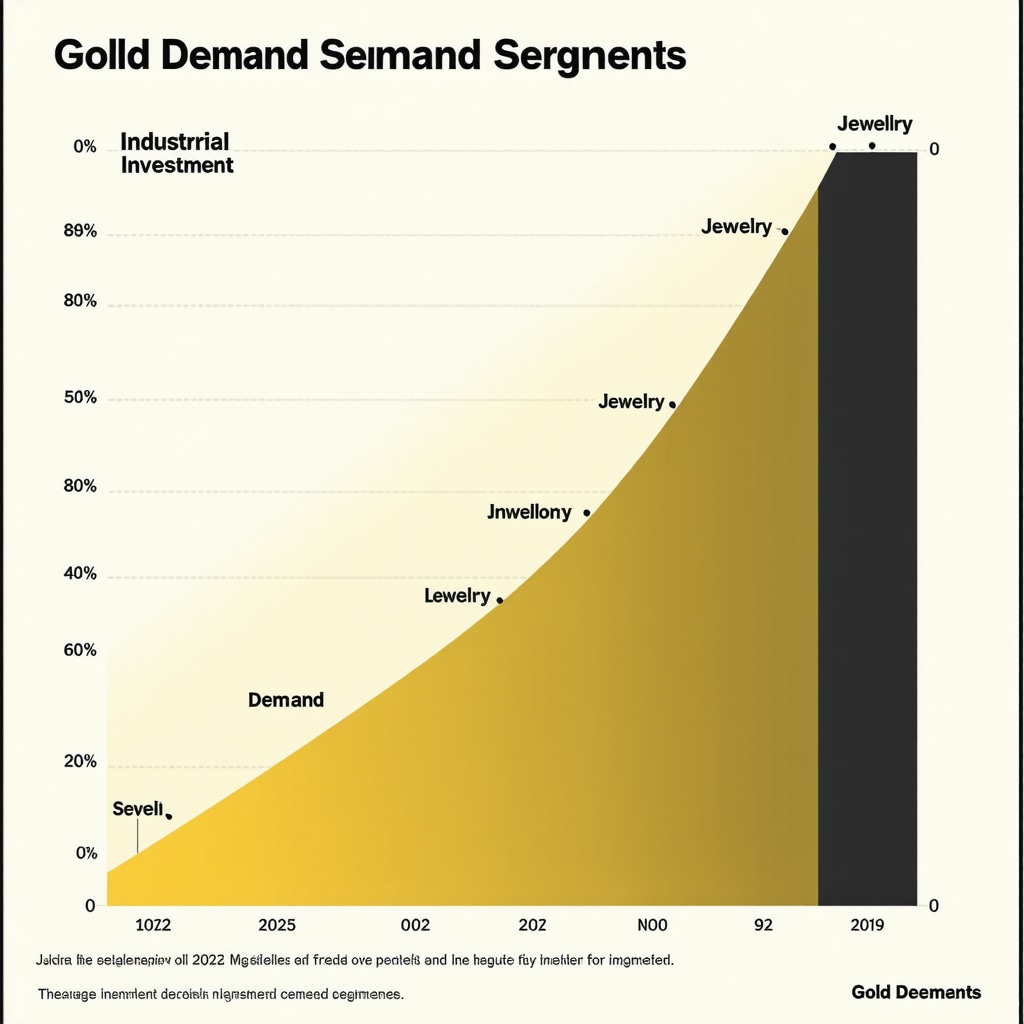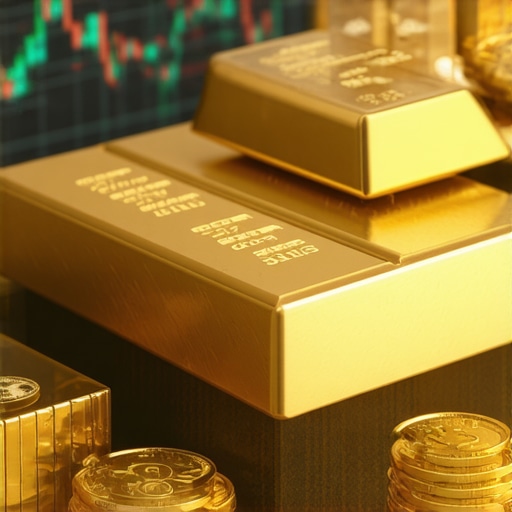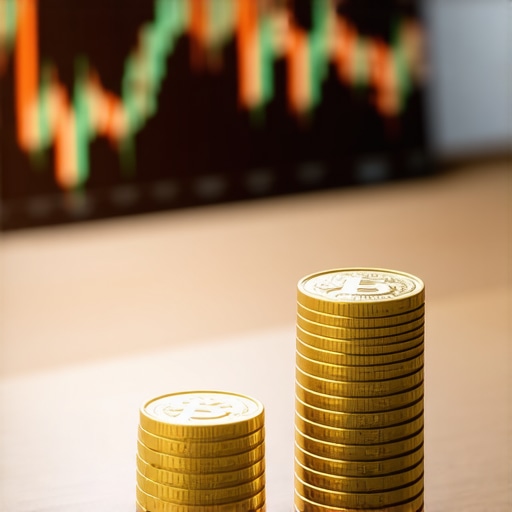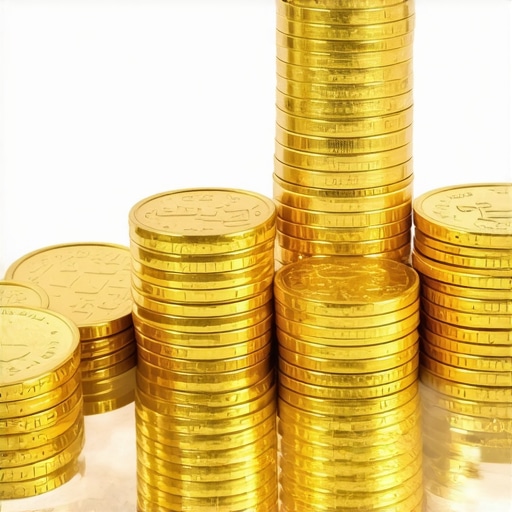Gold Rush or Gold Snub? Why 2025 is the Year to Brace for Gold Buying Adventures
Picture this: it’s 2025, and the global economy is doing its usual dance—somewhere between a waltz and a stumble. Investors are eyeing gold like a kid eyeing the last piece of cake, wondering if this shiny metal still holds its promise of safety and wealth. But hold on! Buying gold bars isn’t as simple as walking into a jewelry store and saying, “I’ll take that one.” No, no. It’s a strategic move, a financial chess game, and you want to play it right. So, let’s embark on this glittering journey together.
Why Gold? The Timeless Treasure That Keeps Its Cool
Gold has been mankind’s shiny companion for thousands of years, acting as a hedge against inflation, currency debasement, and economic chaos. Think of it as your financial safety net, crafted in pure, shiny perfection. But in 2025, with markets swinging like a pendulum and geopolitical tensions simmering, the question isn’t just “Should I buy gold?” but “How can I buy gold safely and smartly?”
Are You Ready to Dive Into the Gold Pool? Here’s the Golden Checklist
What’s the Real Deal with Gold Bars? Are They Better Than Coins?
Imagine holding a solid chunk of wealth that’s portable, divisible, and less flashy but more practical than gold coins. Gold bars, especially those in 1kg or 100g sizes, are the go-to for serious investors. They offer lower premiums over spot prices and are easier to store securely. Want to learn more about the best ways to store your shiny loot? Check out this storage guide.
How to Snag Trusted Gold Dealerships Without Falling for Fakes
Ah, the digital gold rush! While online platforms are convenient, they’re also rife with pitfalls. The secret? Do your homework. Verify dealer credentials, read reviews, and look for accreditation from reputable associations. Remember, if a deal sounds too good to be true, it probably is. For a deep dive into finding trustworthy sellers, explore this trusted dealer checklist.
Is Your Storage Strategy as Sharp as Your Buying Technique?
Protection of your precious metals is paramount. Whether you choose a bank safe, a private vault, or a discreet home safe, ensure it’s insured and secure. The best storage practices are your shield against theft and damage. Curious about the latest storage trends? Peek into this storage tips article.
Finally, Is Your Wallet Ready for the Golden Touch?
Investing in gold isn’t just about buying; it’s about timing, understanding market trends, and knowing when to hold or sell. Keep an eye on the gold price forecast for 2025, stay informed on economic indicators, and don’t be shy to seek expert advice. Remember, in the world of gold, patience and knowledge are your best friends.
So, dear reader, as you ponder your next move, ask yourself: Are you ready to turn that shiny metal into your trusted financial ally? Share your thoughts below—let’s spark a conversation on the future of gold investing!
Are You Missing Out on the Hidden Opportunities in Gold Investing?
As 2025 unfolds, seasoned investors are increasingly questioning whether they’re truly leveraging gold’s full potential as a safeguard against economic uncertainties. The nuanced shifts in global markets, driven by geopolitical tensions and inflationary pressures, demand a sophisticated approach to gold investment. Understanding the subtle forces influencing gold prices—from central bank policies to industrial demand—is crucial for making informed decisions. For instance, recent analyses highlight how central bank gold purchases can significantly impact market trends, emphasizing the importance of staying updated with authoritative sources like gold price forecasts for 2026.
So, how can investors optimize their strategies in this dynamic environment? The key lies in diversification—not just holding physical gold but also exploring gold ETFs and mutual funds that align with your risk tolerance and growth objectives. For example, top gold mutual funds for 2026 offer a balanced approach, combining the liquidity of ETFs with the stability of physical assets.
Moreover, are you aware of the latest trends in gold demand? Industrial use, jewelry consumption, and investment demand each have distinct influences on market prices. Analyzing these trends can reveal opportunities that aren’t immediately obvious. For instance, the growing use of gold in technology sectors could signal future price movements, making it a vital factor to monitor. For an in-depth understanding, see gold demand trends analysis.
In the end, the question isn’t just about buying gold but about crafting a resilient, well-informed investment plan. Are you ready to take your gold strategy to the next level? Share your thoughts or experiences in the comments below, or explore more expert insights to refine your approach.
Decoding the Intricate Dynamics of Gold Demand: Industrial, Jewelry, and Investment Forces
As the global economy teeters on the edge of transformation, understanding the multifaceted forces driving gold demand becomes paramount for savvy investors. Gold’s allure isn’t solely rooted in its glitter; it’s a complex interplay of industrial applications, jewelry consumption, and investment trends that collectively influence market prices. Delving into these dimensions reveals opportunities that are often hidden beneath the surface of mainstream analysis.
Industrial demand for gold, particularly in electronics, aerospace, and medical devices, is experiencing a renaissance driven by technological innovation. As the world shifts towards more sophisticated gadgets and sustainable energy solutions, the need for high-purity gold in manufacturing processes is surging. According to a recent report by the World Gold Council, industrial applications accounted for approximately 10% of global gold demand in 2023, but this segment is projected to grow at a compound annual growth rate (CAGR) of around 4% through 2026 (source). This uptick hints at a future where gold’s industrial utility could become a significant price driver, especially as supply chains tighten and technological exports expand.
Jewelry demand, traditionally the largest component of gold consumption, continues to be a reflection of cultural trends, economic prosperity, and geopolitical stability. In emerging markets like India and China, gold jewelry remains a symbol of wealth and cultural identity, often serving as a hedge against economic uncertainties. Interestingly, recent data from the India Gold Policy Center indicates a shift towards more refined, design-focused jewelry that encourages higher purity levels and larger purchases, boosting demand in premium segments (source). Recognizing these patterns allows investors to anticipate price movements based on cultural and economic indicators, enhancing their strategic positioning.
Investment demand, driven by ETFs, futures, and physical holdings, acts as the pulse of the gold market’s speculative and hedging activities. Notably, during times of geopolitical tension or economic downturns, investment demand tends to spike as investors seek safe havens. The World Gold Council reports that gold-backed ETFs saw a 15% increase in holdings during 2023, highlighting a growing preference for liquid, paper-based gold instruments (source). Understanding these cyclical surges enables investors to fine-tune their entry and exit points, aligning their portfolios with macroeconomic signals.
How Can Investors Quantify and Leverage Gold Demand Trends Effectively?
To navigate this intricate web of demand drivers, investors must leverage advanced analytical tools—combining macroeconomic data, industry reports, and geopolitical risk assessments. For instance, employing predictive analytics to correlate central bank gold purchases with industrial demand fluctuations can reveal emerging opportunities. Moreover, staying attuned to policy shifts—such as tariffs on raw materials or environmental regulations influencing mining—can provide early warnings of supply constraints that may propel prices upward.
Furthermore, diversifying across various gold investment vehicles—physical gold, ETFs, futures, and mining stocks—can hedge against volatility inherent in any single segment. For example, during periods when industrial demand accelerates, mining stocks often outperform physical gold, offering a strategic advantage. Conversely, during market crises, physical gold and ETFs may provide more stability.
As you refine your gold investment strategy, consider subscribing to specialized industry reports and participating in expert forums. These resources offer real-time insights into demand shifts and supply-side developments, empowering you to make informed, timely decisions. Remember, in the fluid landscape of 2025, knowledge is your most valuable asset.

Deciphering the Complex Web of Gold Demand: Industrial Innovations, Cultural Shifts, and Investment Strategies
As 2025 progresses, understanding the multifaceted drivers of gold demand becomes vital for investors seeking a competitive edge. Beyond its traditional allure, gold’s market dynamics are increasingly influenced by technological advancements, evolving consumer preferences, and macroeconomic policies. Recognizing these subtleties enables astute investors to capitalize on emerging opportunities and mitigate risks effectively.
How Do Technological Innovations Reshape Gold’s Industrial Demand?
Gold’s role in high-tech applications is expanding, driven by breakthroughs in electronics, aerospace, and medical technology. The surge in demand for high-purity gold for microchips, superconductors, and biomedical devices underscores a shift from traditional jewelry and investment purposes. According to the World Gold Council, industrial demand reached approximately 10% of global gold consumption in 2023 and is projected to grow at a CAGR of about 4% through 2026 (source). This evolution not only sustains gold’s industrial relevance but also influences its market price stability, especially amid supply chain constraints and technological innovations.

Investors should monitor technological adoption trends and supply chain developments, as these factors could serve as early indicators of future price movements. Leveraging industry reports and market analytics can help decipher the nuances of this demand segment, enabling strategic positioning in gold-related assets.
What Cultural and Economic Trends Are Fueling Jewelry Consumption?
Jewelry remains a cornerstone of gold demand, particularly in India and China, where cultural significance and economic growth fuel consumption. Recent reports from the India Gold Policy Center reveal a preference shift towards refined, design-centric jewelry, emphasizing purity and larger investments (source). This trend signals a robust market for premium segments and highlights the importance of cultural nuances in demand forecasting. Moreover, as disposable incomes rise and urbanization accelerates, jewelry demand is expected to sustain its upward trajectory, supporting gold’s status as a safe haven and status symbol.
Investors attuned to these cultural shifts can anticipate demand surges, especially during festive seasons or economic stability periods, which often trigger increased purchases.
How Can Sophisticated Investors Quantify and Leverage Investment Demand Cycles?
Investment demand, primarily driven by ETFs, futures, and physical holdings, acts as a key market sentiment indicator. During times of geopolitical tension or economic uncertainty, investment demand typically spikes, strengthening gold’s safe-haven appeal. The World Gold Council reports a 15% increase in ETF holdings during 2023, reflecting growing preference for liquid gold instruments (source).
To effectively leverage these cycles, investors should employ macroeconomic analytics, monitor central bank purchases, and analyze geopolitical developments. Advanced tools like predictive modeling and supply-demand analytics can provide actionable insights, enabling timely entry and exit strategies. Diversification across physical gold, ETFs, and mining stocks ensures resilience amid market volatility, aligning with individual risk profiles and investment horizons.
Engaging with industry publications and expert forums further enhances strategic foresight, allowing investors to stay ahead of demand shifts and price trends. Remember, in the intricate landscape of 2025, mastery over demand drivers is crucial for sustained wealth preservation and growth.
Expert Insights & Advanced Considerations
Strategic Diversification is Crucial in 2025
In the evolving gold market of 2025, seasoned investors emphasize diversification across physical gold, ETFs, and mining stocks to hedge against volatility. This multi-pronged approach mitigates risks and capitalizes on various demand drivers, including industrial use and cultural trends. Leveraging innovative analytical tools to monitor demand shifts can lead to more informed decision-making.
Technological Advancements Will Drive Industrial Demand
Recent developments in electronics, aerospace, and medical sectors are boosting industrial demand for high-purity gold. According to the World Gold Council, this segment is projected to grow at a CAGR of 4%, making it a vital component for future price stability. Investors should stay attuned to breakthroughs in microchip manufacturing and biomedical applications.
Cultural Trends and Jewelry Demand Remain Robust
In markets like India and China, gold jewelry continues to symbolize wealth and cultural identity. The shift towards refined, design-centric jewelry further sustains demand. Recognizing these cultural shifts enables investors to anticipate market surges during festivals and special occasions.
Investment Demand Cycles Are Influenced by Geopolitical Factors
During times of geopolitical tension and economic uncertainty, investment demand spikes. ETFs saw a 15% increase in holdings in 2023, reflecting a preference for liquid gold assets. Advanced predictive analytics can help identify optimal entry and exit points based on macroeconomic signals.
Curated Expert Resources
- World Gold Council: An authoritative source for industry demand and market analysis, providing insights into industrial and investment trends.
- Gold Price Forecasts 2025 & 2026: Comprehensive reports that analyze macroeconomic drivers influencing gold prices, essential for strategic planning.
- Trusted Gold Dealerships: Guides on verifying credentials and avoiding scams, ensuring secure transactions.
- Gold Storage Best Practices: Expert advice on secure and insured storage solutions, crucial for safeguarding assets.
- Industry Reports & Expert Forums: Platforms offering real-time insights into demand shifts, supply constraints, and geopolitical impacts.
Final Expert Perspective
Mastering the complexities of gold demand in 2025—from industrial innovations and cultural shifts to geopolitical influences—is essential for sophisticated investors. A nuanced understanding of these factors enables strategic positioning, risk mitigation, and wealth preservation. Dive deep into authoritative sources like the gold price forecasts and trusted dealer guides to elevate your investment game. Engage with the community, share your insights, and stay ahead in this dynamic landscape—your strategic foresight today shapes your wealth tomorrow.










